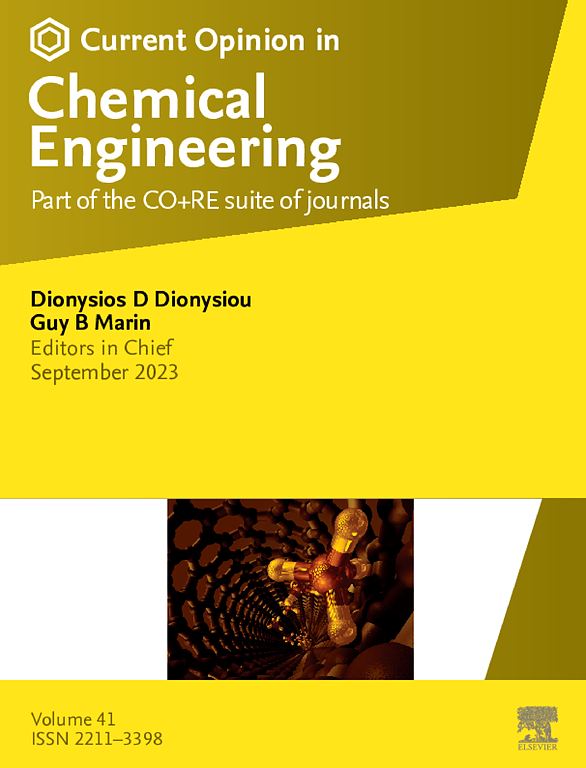地球范围内可持续太阳能系统的预测和评估方法:它们有多可靠?
IF 6.8
2区 工程技术
Q1 BIOTECHNOLOGY & APPLIED MICROBIOLOGY
引用次数: 0
摘要
本研究对地球边界框架内太阳能系统的可持续性进行了批判性分析,该框架设定了人类可以安全运行的限制。鉴于能源部门对全球温室气体排放的巨大贡献,太阳能已成为向可持续能源未来转变的关键因素。然而,许多挑战阻碍了太阳能系统达到最佳效果,包括技术和方法上的可持续工具限制、环境影响和社会经济影响。本研究旨在全面评估这些挑战,并通过应用生命周期可持续性评估方法提出克服这些挑战的策略。主要的研究问题是,“在我们的地球范围内,可持续太阳能系统的预测性和预见性评估方法有多可靠?”该研究综合了循环经济原理、临界性评估和先进的技术工具,以提高太阳能系统的效率、环境绩效和社会经济效益。通过解决太阳能技术的整个生命周期-从材料提取到寿命结束(从摇篮到坟墓)-这项工作旨在为开发更可持续的太阳能系统做出贡献,这些系统在我们地球边界的安全范围内运行。研究结果强调,需要采取全面的方法,不仅关注技术进步,还要考虑更广泛的环境和社会经济影响,以确保真正可持续的能源转型。本文章由计算机程序翻译,如有差异,请以英文原文为准。
Prediction and assessment methods for sustainable solar energy systems within our planetary boundaries: how reliable are they?
This study presents a critical analysis of the sustainability of solar energy systems within the planetary boundaries framework, which sets the limits within which humanity can safely operate. Given the substantial contribution of the energy sector to global greenhouse gas emissions, solar energy has emerged as a crucial element in the shift toward a sustainable energy future. Nevertheless, numerous challenges impede solar energy systems reaching optimal effectiveness, encompassing technological and methodological sustainable tools constraints, environmental impacts, and socioeconomic implications. This research aims to comprehensively assess these challenges and propose strategies to surmount them through applying a Life Cycle Sustainability Assessment approach. The primary research question addressed is, "How reliable are the predictive and anticipatory assessment methods for sustainable solar energy systems within our planetary boundaries?" The study integrated circular economy principles, criticality evaluation, and advanced technological tools to enhance solar energy systems’ efficiency, environmental performance, and socioeconomic benefits. By addressing the entire life cycle of solar technologies — from material extraction to end-of-life (cradle-to-grave) — this work seeks to contribute to developing more sustainable solar energy systems that operate within the safe limits of our planet’s boundaries. The findings highlight the need for a holistic approach that not only focuses on technological advancements but also considers the broader environmental and socioeconomic impacts to ensure a truly sustainable energy transition.
求助全文
通过发布文献求助,成功后即可免费获取论文全文。
去求助
来源期刊

Current Opinion in Chemical Engineering
BIOTECHNOLOGY & APPLIED MICROBIOLOGYENGINE-ENGINEERING, CHEMICAL
CiteScore
12.80
自引率
3.00%
发文量
114
期刊介绍:
Current Opinion in Chemical Engineering is devoted to bringing forth short and focused review articles written by experts on current advances in different areas of chemical engineering. Only invited review articles will be published.
The goals of each review article in Current Opinion in Chemical Engineering are:
1. To acquaint the reader/researcher with the most important recent papers in the given topic.
2. To provide the reader with the views/opinions of the expert in each topic.
The reviews are short (about 2500 words or 5-10 printed pages with figures) and serve as an invaluable source of information for researchers, teachers, professionals and students. The reviews also aim to stimulate exchange of ideas among experts.
Themed sections:
Each review will focus on particular aspects of one of the following themed sections of chemical engineering:
1. Nanotechnology
2. Energy and environmental engineering
3. Biotechnology and bioprocess engineering
4. Biological engineering (covering tissue engineering, regenerative medicine, drug delivery)
5. Separation engineering (covering membrane technologies, adsorbents, desalination, distillation etc.)
6. Materials engineering (covering biomaterials, inorganic especially ceramic materials, nanostructured materials).
7. Process systems engineering
8. Reaction engineering and catalysis.
 求助内容:
求助内容: 应助结果提醒方式:
应助结果提醒方式:


